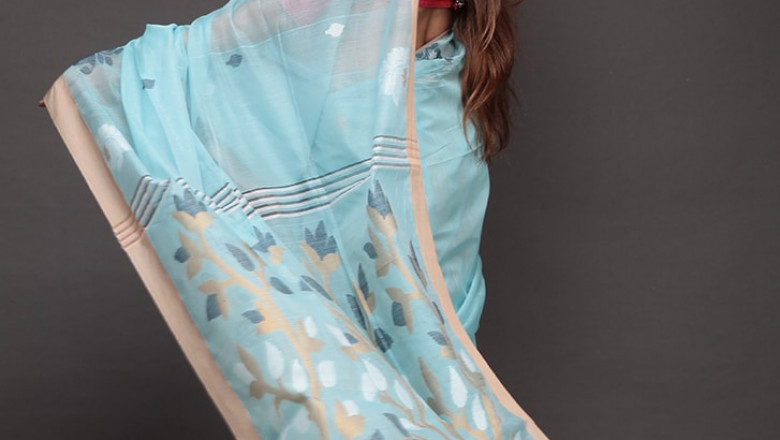views

India, a remarkable name in the socio-cultural map of this world, has given birth to a plethora of handwoven fabrics and textiles. And sarees have been representing the eternal celebration of our culture and ethnicity since time immemorial. From different silk varieties to handloom cotton sarees, there is craft and creativity blooming in every nook and corner of this country. And all them are quite significant in terms of our pride and nationality. A handloom cotton saree bears on its’ shoulders the age old history of Indian culture and traditions. It portrays the true essence of our own soil through handcrafted designs, fabrics, weaving techniques, etc. In this blog, we’ll explore the cultural and geographical significance of handloom cotton sarees in India. Read on.
Cultural Significance of A Handloom Cotton Saree
Handloom cotton sarees were born in our own lands, on the cradles of the weavers, and grew up in the lanes and alleys of different Indian villages and provinces. From the traditional tie and dye Ikkat, to Tant, from Khadi to Begampuri, these sarees represent the ethnic cultures of India on the wide canvas of fashion around the globe. Our home grown cotton yarns are globally famous for their soft and breezy appearances. The handloom cotton saree has shared its’ space and left significant footprints in the global fashion industry. As a prominent take on today’s fusion fashion, these sarees are being widely used for experimental styling.
Historical Significance
Apart from that, if you turn the pages of history, our handloom cotton sarees made a significant mark in ruling out the Britishers. It had appeared as a safe retreat to the natives when they went ahead to boycott the cheap imported western fabrics. Handloom Khadi cotton fabric is our own textile material that helped our ancestors survive the torturous Colonial era. Who hasn’t heard of the Chakra spinning technique of cotton yarns, that Gandhiji himself had promoted across the Indian villages during the freedom movements! Today’s handloom cotton weaving techniques have evolved since then and emerged with glory as our national textile brands.
Geographical and Climate-Related Significance
In a tropical country such as ours, it is more than a bare necessity to wear soft fabrics to be able to beat the summer heat. What better than a soft and breathable handloom cotton saree to stay cool on a scorching summer day? These sarees are tender and gentle to your skin and also they reduce the sweat level by absorbing the sweat particles. Hence, you can wear them in summer and feel comfortable during long hours. Women across India, especially the working ladies in Bengal and all over the eastern parts, prefer wearing saree on a daily basis over other outfits. A breezy handloom cotton saree is, therefore, a life savior. You can style it the way you want and yet feel all comfortable.
The Final Note
The handloom cotton saree is perhaps the most versatile piece of clothing you could ever come across. From fusion to ethnic styling, from creativity to comfort, these sarees lead ahead of many in the queue.












